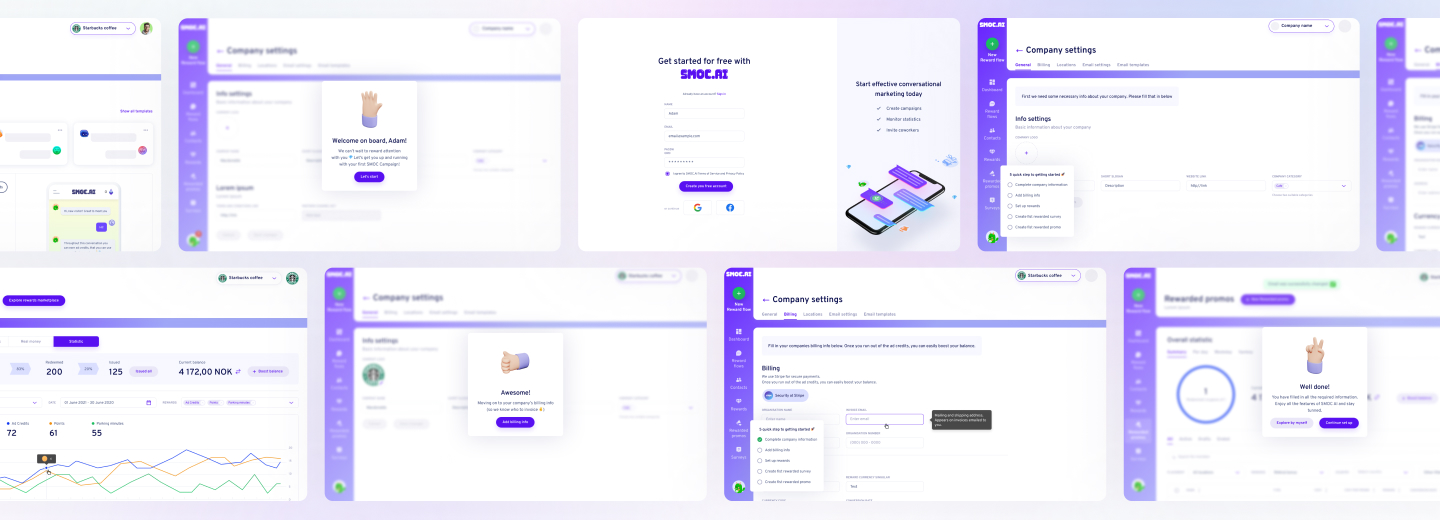I have spent the last decade sitting at the intersection of product, engineering, and go-to-market, building and advising startups that had more ambition than headcount. The patterns repeat. The tools change. The stakes rise. And the path to a product that customers rely on still depends on a few simple, hard rules: validate fast, build what proves value, keep the delivery engine clean, and measure everything that matters.
What follows is a field-tested playbook tuned for 2026. It is built for founders and leaders who want speed without chaos, clarity without paperwork, and a product that can scale once it starts to hit. If you lead a team or plan to, this is written for you.
WHAT'S IN THE ARTICLE
What a 2026-ready startup looks like
A digital startup in 2026 is AI-native, privacy-forward, and distribution-smart. That does not mean sprinkling a chatbot on top of a weak idea. It means building with data, automation, and assistive flows from day one.
- AI-native means your product can reason, summarize, or act on context. It sits inside key user workflows and saves time in ways that are obvious and measurable.
- Privacy-forward means you design data boundaries early. Regional storage, explicit consent, and selective retention are not afterthoughts.
- Distribution-smart means you tap networks, platforms, and partners your users already trust. It also means packaging and pricing that let people try, buy, and expand with minimal friction.
Founders who win find an unfair wedge. Maybe it is a unique dataset, a narrow workflow that competitors ignore, or a sales motion that rides on someone else’s momentum. They also move with discipline. That is the real separator.
The operating system for startup building: separate stages, one rhythm
I coach teams to run the company like a product. Seven loops, clear criteria, and a single source of truth.
- Intent: Define the bet in writing. Who hurts, how often, and why your timing is right.
- Insight: Test that pain. Interviews, shadowing, and simple tests that would embarrass an engineer.
- Bet: Choose the narrowest value that triggers a “wow” and pay for outcomes, not code.
- Build: Ship the smallest version that works under real use, measured end to end.
- Launch: Release to a controlled group with an offer and a support plan.
- Learn: Review behavior, not opinions. Decide to double down, edit, or stop.
- Scale: Harden, price, package, and open the tap only when the engine runs clean.
Use stage gates. If you cannot show real signals to cross a gate, you do not move. This is how you keep the team honest and the roadmap lean.
Validation, the fast way
You are not searching for perfection. You are searching for evidence. Setup a 21-day validation sprint and keep it public inside your company.
- Day 1 to 3: Draft the problem thesis, ICP, and initial promise. Write two landing pages with different messages. Set up analytics and a waitlist.
- Day 4 to 7: Run customer interviews. Ten short conversations beat three long ones. Ask for screens, workflows, and a recent painful moment.
- Day 8 to 12: Ship a no-code or low-code prototype. This can be a clickable mock, a concierge service, or a simple spreadsheet with a form.
- Day 13 to 18: Drive traffic. Use targeted outreach, partner lists, or small paid tests. Track signups, replies, and opt-in to pay.
- Day 19 to 21: Sell. Ask for a card on file, a letter of intent, or a pilot contract. Free trials are fine if you can connect the dots to paid.
Stop asking if people “would” use it. Ask for time on their calendar, access to their data, or money. These are the only reliable signals.
In the first years of startup life, try applying a short product strategy. Strategy does not need 30 slides. Use this one-page structure and keep it visible not to muddle things around.
- Customer profile: Role, workflow, current tools, top three pains.
- Promise: A specific outcome in a specific time. Example: “Close month-end in 3 hours, not 3 days.”
- Differentiation: Two things you do that rivals cannot easily copy. Data advantage, workflow lock-in, or distribution edge.
- Pricing model: What you charge for and why. Seats, usage, outcomes, or tiers.
- Distribution: Three repeatable channels with proof. Partners, platforms, or content that converts.
- Moat over time: How network effects, data, or switching costs grow as you scale.
Revisit monthly. Strategy is a living document, not a diploma.
Technical simplicity for the first 12 months
Keep your architecture boring and your product surprising. Decide what to buy, what to assemble, and what to own.
- Frontend: A modern reactive framework with strong SSR support and a design system from day one.
- Mobile: Cross-platform if your core value is not hardware or deep mobile-specific UX. Native when performance or platform features are vital.
- Backend: Managed Postgres or MySQL for core data, object storage for files, and a serverless or container platform so you can move fast without herding servers.
- AI layer: An orchestration service, retrieval with a vector index, and a strict data boundary. Use model-agnostic patterns so you can swap providers.
- Analytics: Event pipeline with a CDP, product analytics, and a centralized metrics store.
- Observability: Logs, metrics, traces, and error tracking configured in week one.
Think about buying plugins or extensions where it is possible instead of building them to save time. Below, in the table, you will find a list of features along with their definitions, indicating when you should buy or build them for maximum profits.
| Capability | Start with | Buy when | Build when |
| Authentication | Managed auth | SSO, enterprise controls | You have a unique identity model |
| Billing | Billing platform | Multi-currency, tax complexity | Your pricing logic is your moat |
| Search | Hosted search | Relevance tuning needs experts | Search is core differentiation |
| AI inference | Model APIs | You need uptime SLAs or data isolation | Model quality is your edge |
| Data pipeline | Low-config ETL/CDP | Many sources and teams | Latency-sensitive proprietary logic |
| Notifications | Multi-channel service | Complex routing at scale | You are a communications product |
Do not overfit to your taste in tools. Optimize for time to value, not perfection.
AI-native design, without gimmicks
AI is a teammate inside your product. Treat it like one.
- Copilots: Bring context-aware suggestions right where the user works. Inline, not in a separate chat box. Make the next best action obvious.
- Automations: Triggered by events and guardrails. Always show the decision, the reason, and a way to undo.
- Personalization: Adapt content and flows to role and intent. Keep it transparent and give control.
Guardrails matter.
- Data controls: Separate customer data, mask sensitive fields, and log prompts and outputs.
- Evaluation: Set up golden datasets. Test for accuracy, bias, and behavior drift. Track regressions like bugs.
- Human in the loop: For high-stakes actions, require confirmation or staged approval.
- Abuse and security: Treat prompt injection and supply chain risks as first-class. Red-team your inputs.
A great product makes AI feel invisible. Fast, safe, and helpful beats clever.
Data and analytics from day one
You are guessing until you measure. Wire the data plane early.
- Instrument core events with clear names and payloads. Version them like code.
- Define your north star metric and the three inputs that move it. Keep this stable for at least a quarter.
- Build a lightweight customer 360 view. Combine product usage, billing, and support signals.
- Create a weekly metrics rhythm. A short deck, the same sections each week, and owners who can speak to the numbers.
Privacy is not a blocker when you plan ahead. Track consent, give users control, and minimize what you store. Keep only what you need to deliver value.
Security, privacy, and trust
Trust earns you bigger deals, faster renewals, and permission to move into new workflows. Start small, start early.
- Security baseline: SSO for your team, MFA everywhere, least privilege access, and secrets management. Automate dependency checks and patching.
- Data protection: Encrypt at rest and in transit, restrict production access, and segregate customer data. Keep audit logs and review them.
- Compliance path: Map your target industries. If you sell to mid-market or enterprise, a SOC 2 report opens doors. If you touch health or finance, plan for the right controls and vendors who are already certified.
- Vendor management: Maintain a living inventory of tools, data they access, and risk levels.
Security by design reduces surprises when bigger buyers start asking for questionnaires.

Looking to Build an MVP without worries about strategy planning?
EVNE Developers is a dedicated software development team with a product mindset.
We’ll be happy to help you turn your idea into life and successfully monetize it.
Monetary profits for your startup to rise
Go-to-market mechanics that actually move
Your product does not sell itself. People do. Systems do. Create both.
- ICP clarity: Start narrow. One role, one team size, one geography, and one trigger event that gets them to listen.
- Message that sticks: A crisp promise tied to a painful job. Back it with a real before and after.
- Channels you can repeat: Partner plays, app marketplaces, domain-specific communities, and focused outbound. Prove one before you chase three.
A simple GTM plan works best.
- Week 1 to 2: Write outbound sequences, craft three short content pieces, and build a partner shortlist.
- Week 3 to 6: Run 100 targeted outbound messages per week, publish weekly content, and meet five partners.
- Week 7 to 10: Host a workshop or live demo for early users and prospects. Turn questions into product ideas and content.
- Week 11 to 12: Review data, prune the channels that do not convert, and double the ones that do.
Price for learning, then for scale.
- Start with transparent tiers that match your ICP segments.
- Tie price to measurable value drivers, not vanity limits.
- Offer an annual option with a small discount and a kickoff plan, not just a contract.
Money model: budgets, runway, and unit economics
Cash is a product constraint. Make it explicit.
- Headcount: Your largest cost. Hire in trios that deliver outcomes, not functions in isolation.
- Infra and tools: Keep under control by picking vendors with clear usage-based pricing and alerts.
- GTM spend: Treat it like product experiments. Small bets with strong measurement.
A sample lean 12-month budget for a pre-seed SaaS team of eight:
| Category | Monthly spend | Notes |
| Team compensation | $120,000 | 8 people, mix of engineering and GTM |
| Cloud and tools | $12,000 | Compute, storage, analytics, security |
| AI model costs | $6,000 | Variable, watch token-heavy features |
| Marketing and sales | $18,000 | Ads, events, content, partner fees |
| Legal and compliance | $5,000 | Basic counsel, audits planning |
| Other operations | $4,000 | Office, travel, misc |
| Total | $165,000 | Runway depends on funding and revenue |
Unit economics you should be able to calculate by month 4:
- CAC: All GTM costs divided by new paying customers.
- Payback: CAC divided by monthly gross profit per customer.
- LTV: Average monthly gross profit times expected months retained.
- Gross margin: Revenue minus direct costs, as a percentage.
Set guardrails. Do not scale paid acquisition until payback is under 9 months with stable retention.
Execution rhythm and governance
You cannot inspect quality into a product. You need a rhythm that produces quality by default.
- OKRs, but light: One company objective and three key results per quarter. Team OKRs roll up, not sideways.
- Roadmap by outcomes: Themes and problems, not features. Features are the path, not the promise.
- Two-track delivery: Discovery and delivery run in parallel. Discovery feeds delivery with validated items only.
- RACI on complex decisions: Who decides, who contributes, who implements, who stays informed.
Every week, ask and answer three questions.
- What value did we create for customers?
- What did we learn that changes our plan?
- What did we ship that proves both?
Risk radar and decision rules
Startups die from noise and slow decisions. Write down your thresholds.
- Kill criteria: If a bet misses two cycles of its success metric, stop and reframe.
- Legal and data risks: Maintain a heat map. High-severity items get owner and deadline within 24 hours.
- Vendor risk: If a dependency holds core value, have a second option ready.
- Pre-mortem: Before major launches, list five ways it can fail. Assign mitigations to owners.
When you face a hard call, short memos beat meetings. State the problem, options, costs, and recommendation. Set a decision date and stick to it.
From MVP to scale without losing your edge
Scale is a tax on speed. Pay it only when the product earns it.
- Reliability: Set an SLO that matches your buyers. 99.9 percent might be enough for year one. Monitor and act when you miss it.
- Performance: Collect p95 and p99. Users feel those tails more than averages.
- Architecture: Stay monolithic until you have clear reasons to split. Extract services only when team and load demand it.
- Cost control: Track unit costs per active user or per transaction. Set alerts when they drift.
Before you open the floodgates, run a “scale rehearsal.” Stress test, failover test, and support response test in the same week. Invite the whole team.
Hiring pattern and culture that compounds
The first ten hires set habits you will live with for years. Hire builders who care about outcomes and can teach others.
- Founding engineer who owns the system end to end.
- Product designer who thinks in flows and measures impact.
- Full-stack engineer who can ship customer-facing work weekly.
- Data and analytics generalist who can instrument, model, and explain.
- Customer success pro who handles onboarding, feedback, and early renewals.
- GTM lead who can sell, write, and stand up a repeatable motion.
- Security-minded DevOps or platform engineer once you feel usage growing.
- A founder associate or operations lead who keeps the trains moving.
Create rituals that keep you sharp.
- Monday mission: What we are shipping this week and why.
- Daily sync: Ten minutes max. Flags and help needed.
- Wednesday demo: Ship something worth showing.
- Friday review: Metrics, learnings, and decisions.

Proving the Concept for FinTech Startup with a Smart Algorithm for Detecting Subscriptions

Scaling from Prototype into a User-Friendly and Conversational Marketing Platform
A 90-day execution plan you can use on Monday
You can adapt this to your stage. It is designed for a team of five to eight.
- Days 1 to 10
- Define ICP and write two value promises.
- Instrument analytics and error tracking.
- Draft five problem statements and three tests for each.
- Write your first outbound sequence and landing pages.
- Days 11 to 30
- Run customer interviews and concierge tests.
- Build the thinnest version that delivers one promise.
- Set up billing, auth, and a support channel.
- Begin a weekly demo cadence.
- Days 31 to 60
- Ship to a closed beta with ten users.
- Implement AI features where they reduce time to value.
- Publish three pieces of content tied to buyer questions.
- Start partner conversations with clear referral terms.
- Days 61 to 90
- Open a public waitlist. Invite 50 more users.
- Measure activation, retention, and time to first value.
- Tune pricing based on usage and willingness to pay.
- Draft your first two case studies from real outcomes.
By day 90, you have proof or you change the bet. Both are wins if you decide fast.

Need Checking What Your Product Market is Able to Offer?
EVNE Developers is a dedicated software development team with a product mindset.
We’ll be happy to help you turn your idea into life and successfully monetize it.
Conclusion
If you want a sharper plan and faster proof, my team and I can help. We work as a strike unit for founders who need traction and signal without bloat.
A 2-week validation sprint with customer interviews, rapid tests, and a go or no-go call
A 4-week product build that ships a measurable outcome, not a prototype that gathers dust
A GTM ignition plan with messaging, outbound, and a partner path you can run next week
A trust and compliance starter kit that shortens the path to bigger deals
Send your one-pager or deck and we will give you a written assessment within 48 hours. If we see a fit, we will propose a scope that gets you to a real milestone in 30 to 60 days. No fluff. Clear outcomes. Real movement. If you are ready to move from reading to doing, reach out. I am happy to review your plan, give pointed feedback, and help you build a product and a business that earns trust and grows with purpose.
Build what powers your edge. Buy everything that is scaffolding. Identity, billing, search, and observability are great to buy at the start. If your advantage depends on the logic inside those areas, bring them in-house later with a plan and a test suite.
Pick one north star and three input metrics. Keep them for at least a quarter. Create weekly reviews that focus on movement, not speculation. Add a metric only when a decision depends on it.
When work in one area blocks progress in others and when you have clear, repeatable work to hand off. Hire in trios that can deliver outcomes, for example a product manager, a designer, and an engineer for a new stream.
Roadmap by outcomes. Tie every item to a metric and a user promise. Run discovery and delivery as separate tracks. If a feature misses its metric twice, remove it or redesign it. Celebrate deletions that improve clarity and speed.

About author
Roman Bondarenko is the CEO of EVNE Developers. He is an expert in software development and technological entrepreneurship and has 10+years of experience in digital transformation consulting in Healthcare, FinTech, Supply Chain and Logistics.
Author | CEO EVNE Developers


















